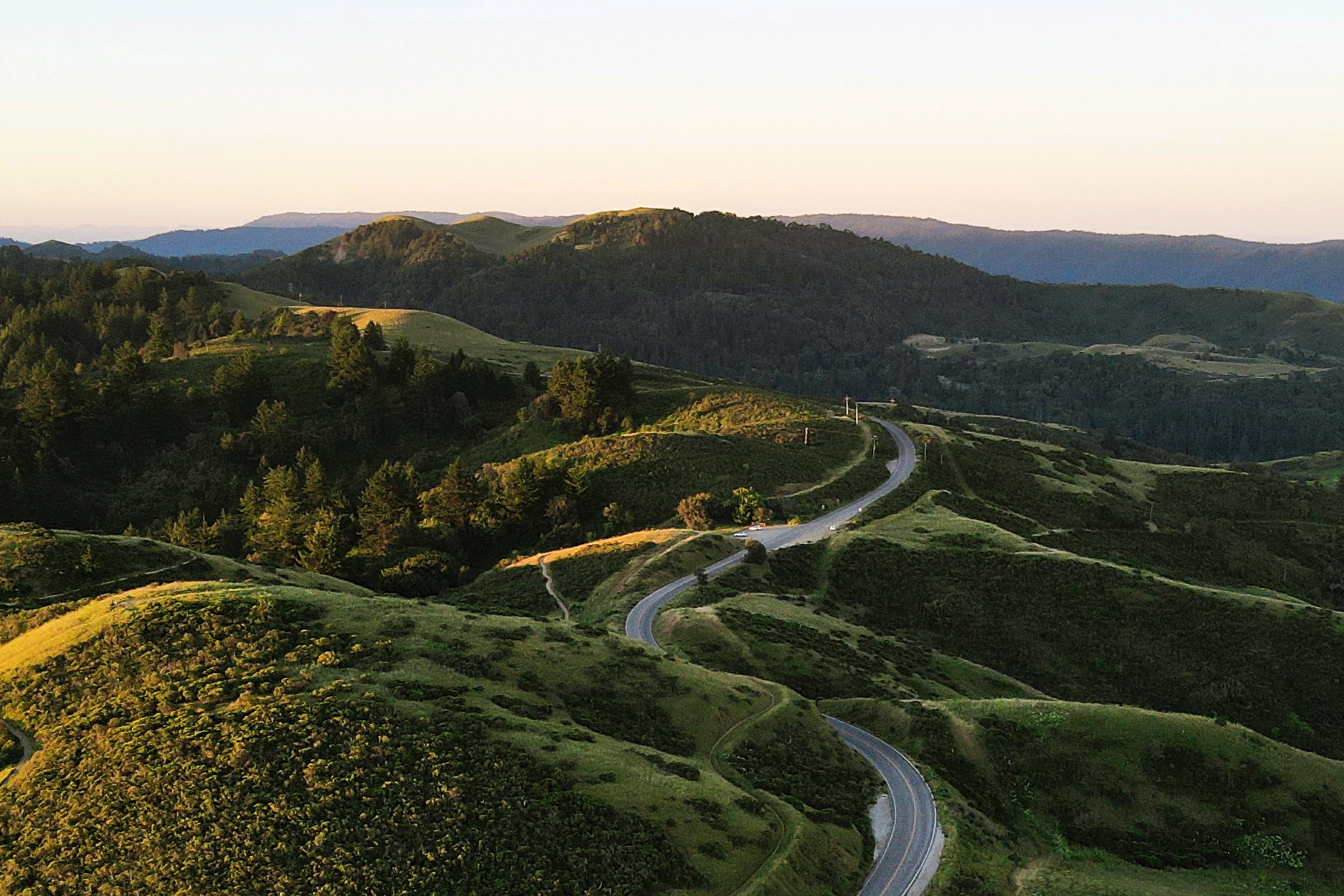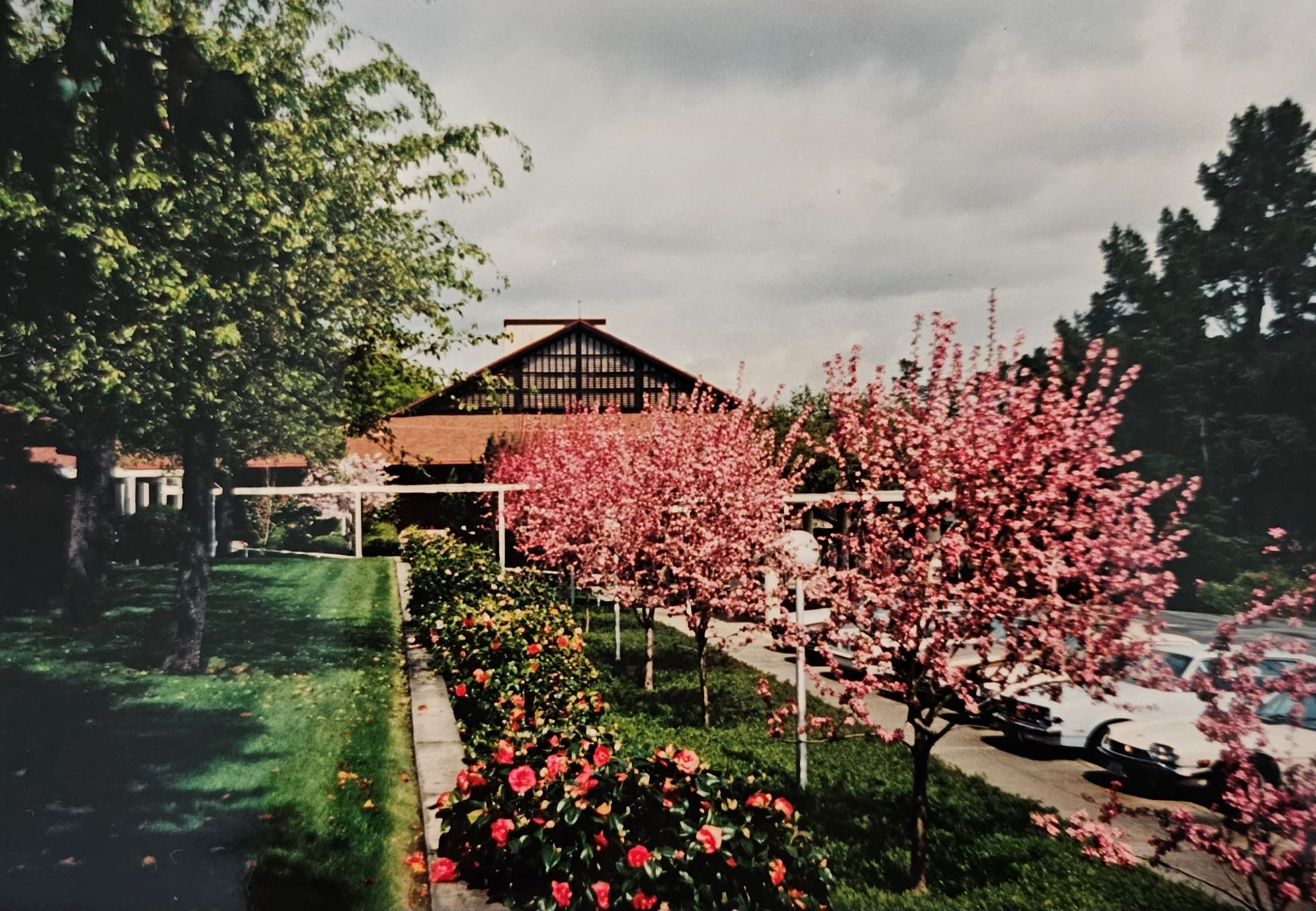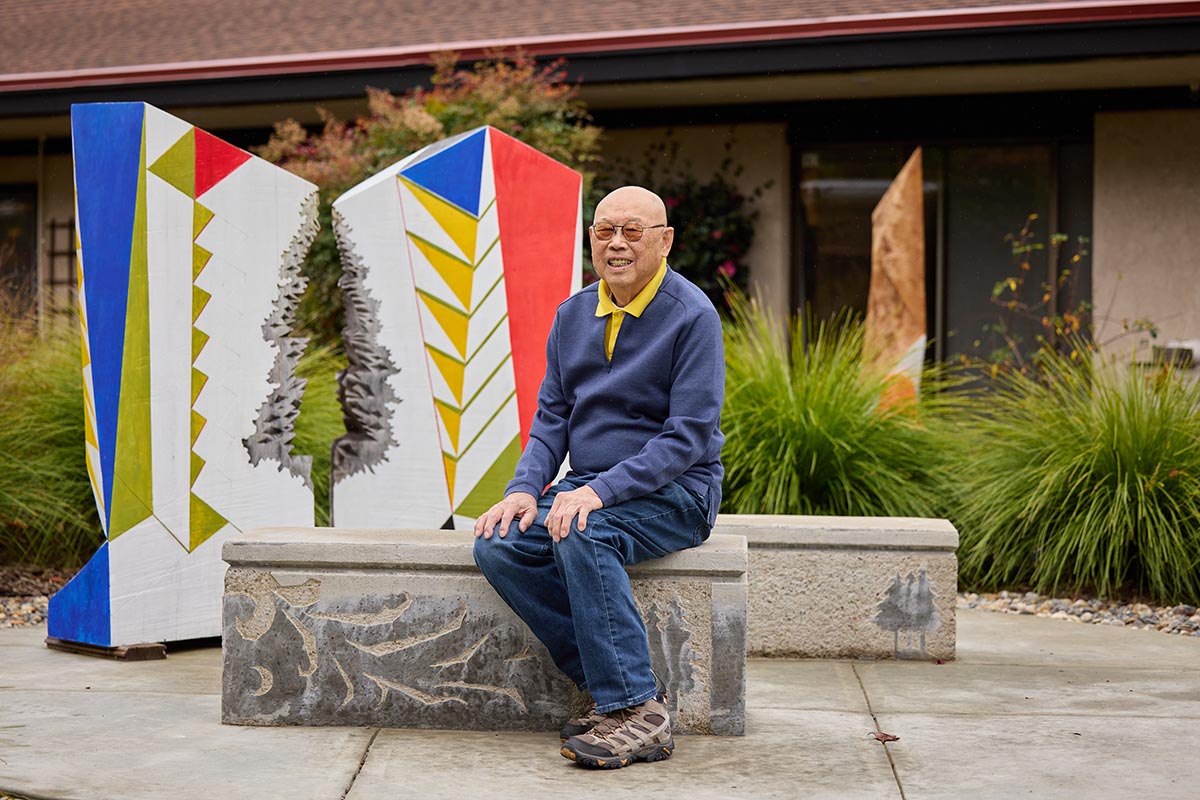THE SEQUOIAS PORTOLA VALLEY HISTORY: 1961 TO PRESENT
If you stand in the central colonnade of The Sequoias Portola Valley and take a look around the grounds, you’ll begin to experience a whisper of the unique history behind our 30+ acre community. Between the graceful foliage-lined pathways and the expansive hip-and-gable roofs it is hard not to be curious. There must be a story behind it, after all. As it turns out, there is.
Jack Ken, a retired architect, knows the story perhaps better than anyone else. He was there.
A new care model based on an east coast concept called: Continuing Care Residential Communities.
For Jack, it all starts back in 1957, as a young architect in his twenties working in nearby Los Altos. He chuckles as he recalls stopping by this new construction site wondering what those developers were building out in the middle of nowhere – Portola Valley had not yet become a town. Jack marveled at the huge mound of dirt in the center, the purpose of which he later learned was to provide weight to flatten the terrain into a smooth canvas ready for construction.

That construction would result in a spacious enclave of small homes for seniors built to support an emerging model referred to as Continuing Care Retirement Communities or “CCRCs” – now known as Life Plan Communities. It was a concept that had become popular on the east coast. The developers were banking on the idea that older adults in California would like it as well. They did. It allowed them to purchase a home, and for a monthly fee, receive centralized dining and support services.

Portola Valley’s innovative design was based on a style of architecture that originated oceans away at the Katsura Imperial Villa in Kyoto, Japan. American architects marveled at its simple elegance and many of them brought back the design elements to the U.S.
The layout was defined by clusters of small houses, built in a manner resembling a checkerboard, each with an outside porch, facing a network of open pathways that connect to a central colonnade. The hip-and-gable roofs created a graceful slope from the center of each house. The clean lines of the houses, attention to detail, and the abundance of trees and plant life all pay homage to the urban villages of Japan and China.
During the housing boom of the 1950s architects brought this unique design to development projects throughout coastal California. Northern California Presbyterian Homes and Services (later to be renamed Sequoia Living in 2019) commissioned John Barney Rogers of Skidmore, Owings, and Merrill to bring this new design to life. The result was The Sequoias Portola Valley, one of the first CCRCs to be built in Northern California.
The grand opening was June 1, 1961. Opening day was full of festivities and attracted government dignitaries as well as new residents. A festive buffet lunch was served and everyone was eager to witness for themselves the new CCRC concept, featuring an intriguing layout that was open, yet private.
The open spaces, natural beauty and privacy proved irresistible to Jack and his wife, Betty.
Jack Ken and his wife, Betty, had their own plans for their transition into senior housing. In 2002, they selected a prime spot at The Sequoias San Francisco – 23rd floor to be exact – with a spectacular view of the city they both loved.
The best laid plans, as the saying goes. Because by chance, a couple they knew were also looking at retirement options and asked Jack and Betty to come along on a visit to The Sequoias Portola Valley. Betty immediately fell in love with the design, open spaces, and the privacy of having their own terrace.


The history of The Sequoias Portola Valley lives on in a design that continues to delight residents.
Relinquishing their view of San Francisco, the couple moved to The Sequoia Portola Valley and never looked back. Jack continues to enjoy all the attributes that attracted his wife to the community. Betty brought him here after all and, while she passed in 2022, here he lives to this day.
“I like the openness, the casual feel. No noise at night. Lots of deer and quail. I wake up in the morning to hear the birds chirping,” Jack says. “I have a patio and plants. And if I don’t want to see a neighbor, I close my doors. Yet I’m still a part of the outdoors.”
Other residents share Jack’s love of The Sequoias. Who wouldn’t be fascinated by a community that sprang from the timeless beauty of the Katsura Imperial Villa? Its history will always make the community special, and it will continue to serve generations of residents for years to come.
